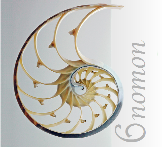



 NEXT
NEXT
 BACK
BACK
 Forum
Forum


Philosophical musings on Quanta & Qualia; Materialism & Spiritualism; Science & Religion; Pragmatism & Idealism, etc.




Post 96. August 06, 2019 continued . . .
Mysticism
Empirical Meditation?
. . . . Mysticism is a romantic and poetic attitude toward the world, in that it appeals primarily to the sentimental side of human nature, emphasizing Intuition & Feeling over Reason & Sensation6. But, contra Mrs. Underhill, I think the “truths of the heart” are no more or less true than the truths of the head. The empirical facts of Science give us power over mundane Nature, while the “transcendent” truths of Poetry give us power over human nature. I, personally, am grounded in science, but that solid foundation gives me the freedom to explore the great beyond (the unknown). So, I can learn from the “truths” of both Mystics and Skeptics.
Clearly indicating her philosophical Idealism, Underhill says, “this sense world . . . Cannot be the external world, but only the self’s projected image of it. It is a work of art, not a scientific fact.” Yet, realists would make exactly the same argument in reverse about the the extra-
Underhill often turns the criticisms of skeptics around to reach the opposite conclusion. “. . . An ordinary object of perception, tends to invalidate the simple and comfortable creed of ‘common sense’; that not merely faith, but gross credulity, is needed by the mind which would accept the apparent as the real.” In other words, don’t believe your mortal eyes, believe your immortal soul. Ironically, Science is a sophisticated form of Realism. It goes beyond appearances to see deeper levels of being, such as the sub-
Mrs. Underhill wrote a magnificent book to give us muggles a sense of the wonders of the mystical realm. But she deliber-
End of Post 96
6. Intuition vs Reason :
The difference between Rationalists and Intuitives is that the latter prefer to simply subconsciously feel the flow, while the former wants to consciously understand the flux of life. Tender-
7. Third Eye :
“The third eye (also called the mind's eye, or inner eye) is a mystical and esoteric concept of a speculative invisible eye, usually depicted as located on the forehead, which provides perception beyond ordinary sight.”
___Wikipedia
A more scientific explanation for such insights into “things not seen” is the unique human ability to imagine possibilities beyond the here & now. One example of that talent is our ability to generalize categories from instances. Hence, we can imagine perfect Forms, even though no such things exist in the real world. Philosophers use the notion of Ideals as aids to thought, but Mystics may treat them as more real than reality.
8. Two Enlightenments :
The historical era typically labeled The European “Enlightenment”, resulted from illumination shed by the secret-
Long prior to that revelation of natural laws, the Orient had its own enlightenment of the human predicament by the insights of the Buddha into the danger of being led by natural motives. But the “Enlightened One” preferred Intuition to Reason.
European science looks under the skin of the material world, while Oriental wisdom looks within the observer. Both views have their place in promoting human flourishing.
9. Empirical Religion :
Mrs. Underhill concludes her introduction : “Oh, taste and see . . . Ours is an experimental science. We can but communicate our system, never its result.” But would she accept the “truths” of Buddhists, who make the same claim of empirical validity?
“Early Buddhism was based on empirical evidence gained by the sense organs (ayatana) and the Buddha seems to have retained a skeptical distance from certain metaphysical questions,”
https://en.wikipedia.org/wiki/Buddhist_philosophy
Christian Mystics

